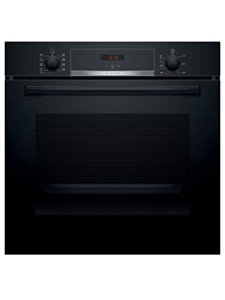The Future of Culinary Convenience: Integrated Ovens and Hobs
In the ever-evolving world of cooking area style, integrated ovens and hobs are at the forefront of modern-day culinary development. These devices not only guarantee aesthetic appeal however likewise enhance functionality and performance, changing how we prepare our meals. As house owners progressively look for to create seamless, trendy, and user-friendly cooking spaces, the combination of ovens and hobs offers a perfect option. This article explores what integrated ovens and hobs are, their advantages, and crucial considerations for those looking to update their kitchen area.
What Are Integrated Ovens and Hobs?
Integrated ovens and hobs are cooking area devices flawlessly built into the cabinetry or counters, instead of standing out as different entities. Integrated ovens are created to mix into kitchen systems, providing a flush surface with surrounding kitchen cabinetry. Similarly, integrated hobs are mounted directly into the countertop, producing a streamlined appearance. This minimalist style approach not just raises the visual appeal of the cooking area but also maximizes readily available area.
inbuilt oven Ovens And Hobs Of Integrated Ovens
Single Ovens: These standalone units are developed for simpleness and ease of use, including a single cooking chamber and several cooking modes such as baking, barbecuing, and roasting.
Double Ovens: Ideal for larger households or avid cooks, double ovens provide 2 independent cooking compartments, enabling numerous meals to be prepared simultaneously at various temperature levels.
Combination Ovens: Blending traditional baking and steam cooking, mix ovens offer flexibility for numerous cooking needs, retaining wetness while making sure perfectly prepared meals.
Types of Integrated Hobs
Gas Hobs: These hobs permit precise temperature control and instantaneous heat, making them a preferred among expert chefs and cooking enthusiasts.
Induction Hobs: Known for their efficiency and safety, induction hobs utilize electro-magnetic energy to heat pots and pans straight. They are quick to heat and cool down quickly, decreasing the threat of burns.
Electric Hobs: Featuring smooth ceramic or glass surfaces, electric hobs are simple to clean and supply an even heat circulation for a variety of cooking designs.
Advantages of Integrated Ovens and Hobs
1. Space Optimization
With the trend of smaller sized living spaces and open-concept homes, integrated home appliances help make the most of cooking area area. By fitting perfectly into kitchen cabinetry, kitchens can appear bigger and more open, minimizing clutter and boosting visual appeal.
2. Visual Appeal
Integrated ovens and hobs supply a smooth, modern appearance that fits well within various style styles. The ability to customize cabinetry ensures that house owners can achieve a cohesive appearance that matches their style, whether modern, traditional, or something in between.
3. Improved Functionality
Integrated appliances frequently feature advanced features such as clever innovation, self-cleaning alternatives, and various cooking modes. These improvements not only enhance the cooking process but likewise improve functionality, making preparing an enjoyable experience.
4. Security Features
Integrated hobs, especially induction models, are considered safer than conventional cooking surfaces. They cool down quickly, decreasing the risk of burns, and frequently include functions like child locks and automated shut-off for extra security.
Secret Considerations When Choosing Integrated Ovens and Hobs
1. Area and Layout
Before acquiring integrated devices, consider the space available in your kitchen area. Procedure the cabinets and counter tops carefully to make sure an ideal fit, allowing for appropriate ventilation and installation area.
2. Cooking Needs
Assess your cooking practices and choices. If you frequently captivate or cook big meals, a double oven may be the very best choice. Conversely, if you're an occasional chef, a single oven may be adequate. Similarly, choosing in between gas, electric, or induction hobs will depend on your cooking style and comfort level.
3. Energy Efficiency
With increasing energy costs and growing ecological concerns, selecting energy-efficient appliances can save cash in the long run. Look for items with high energy scores and features like programmable timers and eco-modes.

4. Quality and Brand
Purchasing high-quality home appliances from trustworthy brand names guarantees durability and efficiency. Checking out customer evaluations and looking for suggestions can help limit the finest choices tailored to your needs.
Conclusion
Integrated ovens and hobs are more than simply kitchen devices; they represent a shift towards a more practical, trendy, and effective method to cooking. As house owners focus on smooth style, benefit, and advanced features, these integrated solutions will unquestionably form the kitchens of tomorrow. Whether renovating a cooking area or designing a brand-new one from scratch, integrating ovens and hobs is an investment that promises to enhance both cooking experiences and the general visual of the home.
